How to Choose the Best Boat Fender Type, Number, Location and More
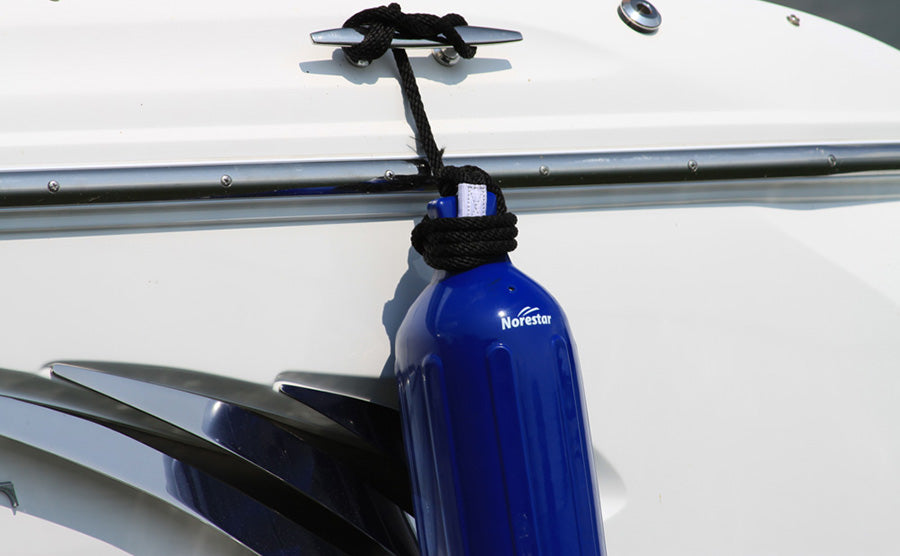
This article focuses on boat fenders, also known as boat bumpers. We'll cover everything you need to know about boat fenders and maybe even some things you don't!
Video: Boat Fender / Bumper Essentials
The video below will hit on all the crucial points we'll make in this article, so if you prefer a video format, go on and hit play! For more in-depth information, read on.
Boat fenders are essential equipment for any boat to protect the hull from contact with docks, pilings and other boats. Boats are expensive but fenders are not; always have the appropriate amount, type and size of fenders or bumpers onboard, and use them properly. It’s better to have too many than too few!
It is important to be prepared for all sorts of mooring conditions, from more extreme examples such as docking in hurricane force winds to the more typical conditions your boat will be in every day.
How to choose boat fenders
Types
There are a variety of fender types to suit different situations. Generally speaking, sausage or cylindrical double-eye fenders are better for shorter, lighter vessels while center hole, round, and hybrid cylindrical-round fenders are best for larger, heavier vessels. There are also specialty fenders, such as transom fenders, for specific mooring arrangements.
Cylindrical double eye fenders are typically hung vertically, but may be hung horizontally with two fender lines. Center hole fenders are typically hung horizontally, but may be hung vertically, with one fender line running through the middle and figure eight knots at each end. Hang fenders vertically when mooring against docks or other flat structures; hang fenders horizontally to fend against protruding structures such as pilings and prevent roll-off.
There are plenty of specialty fenders suited for limited usage. If you have a low freeboard, there are fenders developed to protect the gunwales and rub rails of your boat. Fender cushions are particularly useful for protection against pilings. Transom fenders are designed for the swim platform of your boat or the stern of a sailboat. Many specialty fenders will add protection to your boat for relatively few dollars, and this amounts to cheap insurance compared to costly repair bills.
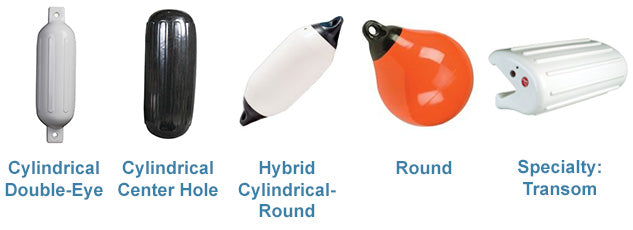
There are a number of popular fender manufactures on the market:
Norestar Boat Fenders
Norestar makes rugged double-eye and HTM (hole-through-the-middle) ribbed fenders. They can be purchased as singles or in packs of two or four with or without lines for a discount. They have also expanded into other styles such as Flat EVA, Contour, Wheel, and Dock Fenders and fender accessories. Norestar's aim is best value per dollar spent so that you get the best possible quality fender for the lowest price.
Supafend Boat Fenders
Supafend makes "one-piece" rotationally molded fenders with non-marking and UV stabilized Marine Grade PVC. They have consistent wall thickness and heavy-duty rope eyelet ends. The fenders are tested before they leave the factory, ensuring maximum fendering durability and reliability. Supafend marine products have been installed extensively on boats under harsh New Zealand weather conditions and have excelled. They have cylindrical double-eye fenders for boats 20' to 55'.
Polyform Boat Fenders
Polyform makes fenders with several configurations that include twin eyes, center hole or round design. They have compact fenders designed for trailered boats. Their HTM-series is their "hole-through-the-middle line" and is designed for a wide variety of applications for boats from 20 to 50 feet long. They also have round buoys and mooring balls.
Taylor Made Boat Fenders
This company has both round cylindrical and oval cylindrical fenders. They produce fenders for a 10 foot dinghy or a 50 foot cruiser. They also manufacture a variety of specialty fenders that include low-board fenders, as well as a mermaid-shaped fender in your choice of pink or white.
Megafend Yacht Fenders
Megafend provides boaters with an easily inflatable vinyl fender that's perfect for boats with limited stowage space. They also have a solid core, hole-through-the-middle fender that is engineered for heavy marine use. All their fenders and buoys are available in many standard and custom sizes.
Sizing
There are three primary considerations when choosing boat fenders:
- Boat Weight
- Boat Length
- Mooring Conditions
Most sizing charts account for mainly item one above, but it is important to use common sense to address the other two. If your boat is particularly heavy for its size, or the conditions you moor in are or will be particularly harsh, use larger, heavier duty fenders than called for in sizing charts.
The general rule of thumb is that a cylindrical fender should have 1" of diameter (2" for round fenders) for every 4' to 5' of boat length.See the sizing chart below for more specific sizing and type guidelines.
| Boat Length In Feet | Cylindrical Fender Diameter | Round Fender Diameter | Type |
| Under 10' | 3" | -- | Cylindrical Double-Eye, Hybrid |
| 10'-15' | 3" - 4" | 9" | Cylindrical Double-Eye, Hybrid |
| 15'-20' | 5" - 5.5" | 12" | Cylindrical Double-Eye, Center Hole, Hybrid |
| 20'-25' | 6" - 6.5" | 15" | Cylindrical Double-Eye, Center Hole, Hybrid, Round |
| 25'-35' | 8" - 8.5" | 18" | Cylindrical Double-Eye, Center Hole, Hybrid, Round |
| 35'-50' | 10.5" - 12" | 21" | Hybrid, Center Hole, Round |
| 50'-60' | 12" | 27" | Hybrid, Center Hole, Round |
| 60'-72' | 15" - 24" | 27" | Hybrid, Center Hole, Round |
| 72’ + | 24” - 32” | 34” |
Hybrid, Round |
Number and placement
Fenders won’t do their job if they’re not deployed properly. Attention should be given to the number and position of fenders on your boat.
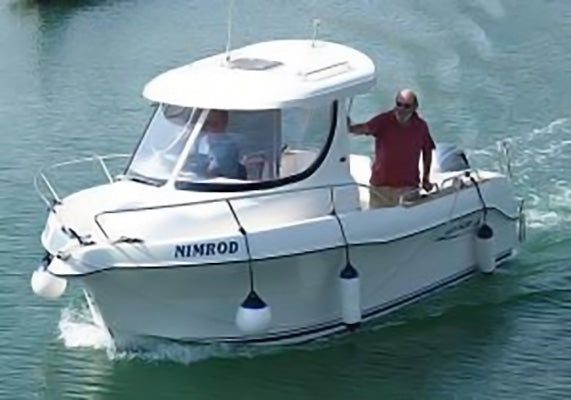
There is a rule of thumb for fender number: use one fender per 10’ of waterline, with a minimum of three fenders. So a 20' boat would need 3 fenders and a 40' would need 4. At least one fender must be placed at maximum beam, with others distributed fore and aft. When rafting, more fenders are a good idea, three at maximum beam and two – round fenders are best – set fore and aft. Again, more fenders are better than fewer, so I’d advise against meeting only minimum requirements.
To position fenders correctly, hang them so that the bottoms of the fenders just skim the water’s surface, and then raise them an inch or two. This prevents the dock from pushing the fender up and out of position while limiting marine growth on the fender. Tie fenders to a solid anchor point, such as a station or a cleat instead of lifelines, which are not made to handle the stress. Also tie fenders as low as possible on the boat. This limits swing arc, ensuring that the fender will better maintain its intended position.
Cleaning, Stowage and Accessories
Cleaning
Clean fenders with soap and water. Do not use harsh cleaning agents such as acetone or related products as they will damage your fenders. Better yet, don’t let your fenders get dirty in the first place; washable fender covers are available to keep your fenders clean and protected from the elements.
Stowage
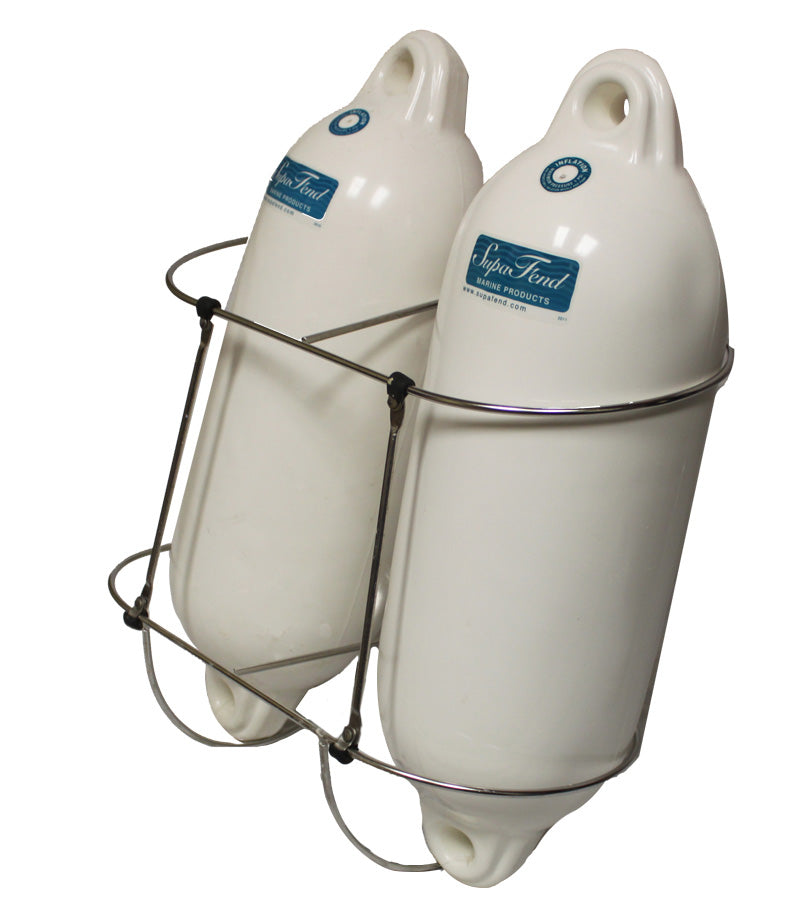
If you follow the advice here and carry extra fenders, you’ll need a place to stow them. You can simply stow the fenders in a storage locker or under a seat. However, this can make access to the fenders inconvenient. Fender racks are great for this as they keep fenders both accessible and out of the way.
Fender racks generally come in two types: folding racks and permanent racks. Folding racks, such as the Norestar Folding Fender Racks fold down when the fenders are removed, freeing up deck space.
Non-Folding racks like the Taylor Made Racks do not fold down which means they take up deck space regardless of whether the fenders are deployed or not and they are generally more expensive. However, they're more sturdy than non-folding racks.
Accessories
There are a number of accessories available to make working with your fenders more convenient. A few very useful ones are fender hand pumps (alternately, most sports ball pumps work) to quickly and easily add air to a fender whenever required, fender height adjusters, to adjust fender height instantly without having to tie knots, and of course fender lines, to keep your fenders properly secured. These products are definitely worth a look.
Final Words
Protect your investment! You’ll be far better off spending a relatively small amount on a good set of fenders than spending a very large amount on boat repair.
- Be sure to get the appropriate sized fenders for your boat and don’t forget to buy some extras
- Get a variety of fender types to prepare for the different mooring situations you’ll encounter
- Have a stowage strategy that allows for easy accessibly, yet keeps fenders from getting underfoot
- Keep your fenders clean; they’ll look better and last longer
- Check out accessories such as hand pumps and fender height adjusters to make your boating life that much easier
Happy Boating!
Published
Recent Posts
Windlass Problems? Common Issues and How to Fix Them
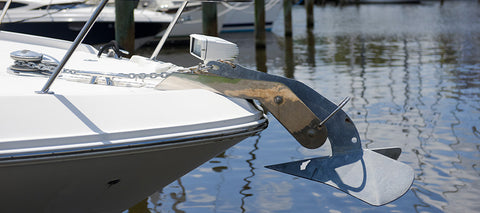
Let's look at common issues with windlasses and how to address them:
1) Windlass Won’t Run in Either Direction
2) Solenoid Clicks, but Windlass Won’t Move
3) Windlass Lacks Power to Haul the Anchor
4) Rode Gets Jammed or Doesn’t Come In
Our history: a 20 year journey
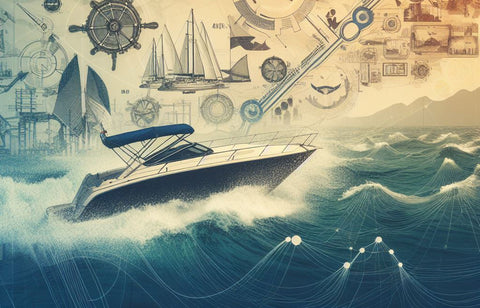
Boat Cleaning Tips for Anglers: Keeping Your Vessel Spotless and Pristine

Avast, Ye Mariners! Master the Art of Docking: A Swashbuckling Guide for Boaters
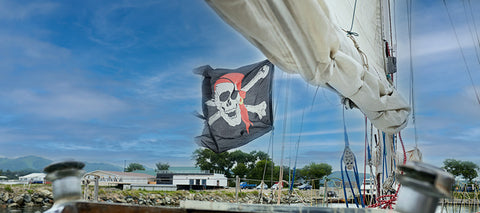
Top Reasons to Keep a Boating Maintenance Log
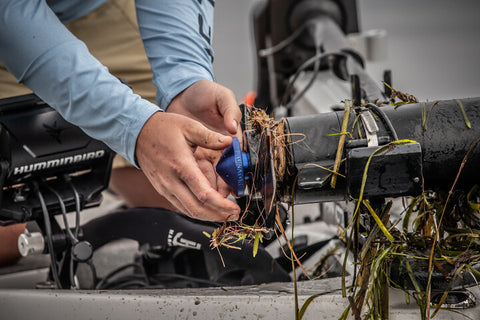
4 Top Tips for Buying a New-to-you Used Boat
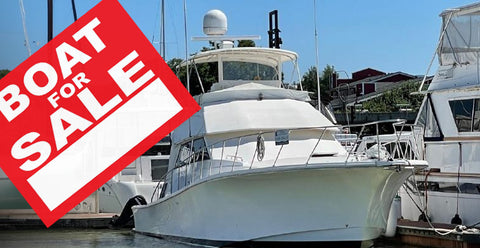
Bent Boat Anchor Shank: Common Causes and Prevention Tips
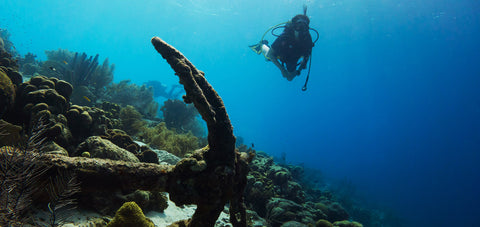
Prepare Your Boat For An Above Average Hurricane Season
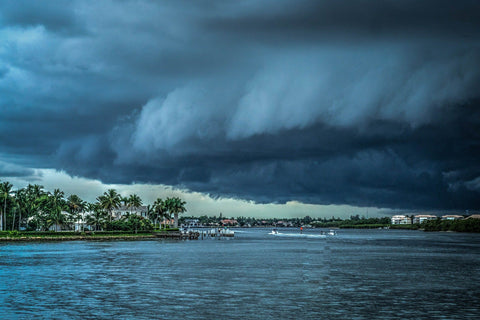
Best Methods For Anchoring Your Jet Ski in Deep or Shallow Water
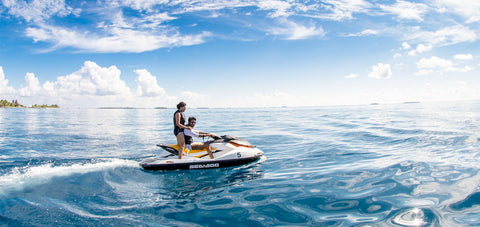
Best Options For Connecting Your Boat To WiFi Internet
